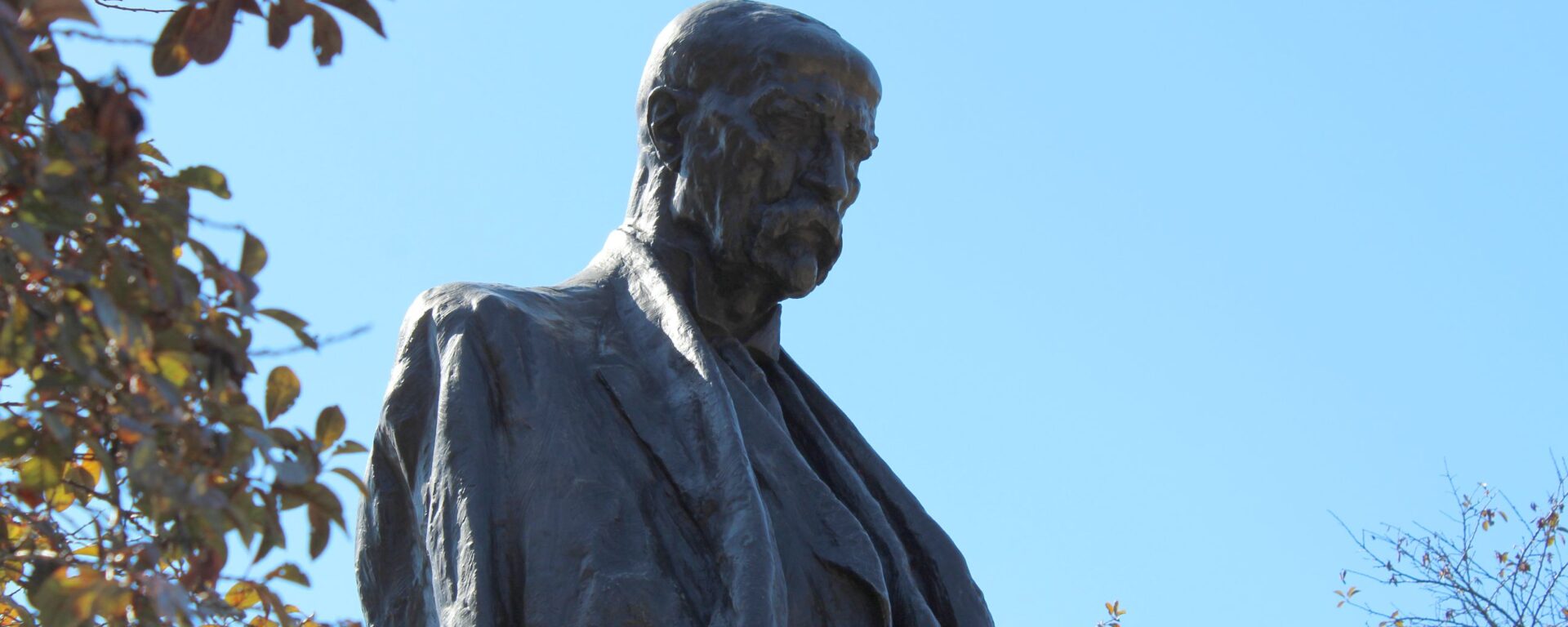“Do not fear and do not steal.”
In a triangular park between Massachusetts Avenue, 22nd Street NW, and Q Street NW stands the statue of Tomáš Garrigue Masaryk, founder of Czechoslovakia. Nestled between Dupont Circle and Sheridan Circle, it sits in the heart of Embassy Row. Though thousands of commuters pass by it on a daily basis, few know the history behind the statue or behind the man.

The statue was sculpted in 1937 – shortly before Masaryk’s death – by Czech artist Vincenc Makovský. The plaster sat in the National Gallery of Prague for over 30 years before it was cast in bronze during the Prague Spring of 1968. The statue was not erected at that time because of the Warsaw Pact invasion that shortly followed and was instead hidden outside of Prague.
In 1999 – after the Czech Republic was admitted to NATO – the group American Friends of the Czech Republic began lobbying for a monument to Masaryk in D.C. that would commemorate the ties between the two countries that went back to the end of World War I when the United States stood in support of a Czechoslovakian republic, independent of the Austro-Hungarian Empire. While looking for a suitable statue, Makovský’s statue was rediscovered in the storage of the Czech National Museum.

In September 2002 the statue was dedicated by Czech President Václav Havel, former Slovak President Michal Kováč, U.S. Ambassador to the Czech Republic Craig Stapleton, and former U.S. Secretary of State Madeleine Albright (who was born in Prague). The ceremony was attended by over 1,000 people.
 Masaryk had very close ties to the United States throughout his life. He first came in 1878 when he married an American woman he met in Leipzig – Charlotte Garrigue. He came again in 1902 when he lectured at the University of Chicago (Chicago being a hub of Czechoslovakian immigration to the United States). His final visit was in 1918, during which he drafted the Czechoslovakian Declaration of Independence and convinced President Wilson of the Czechoslovakian cause. By the time he left the United States at the end of 1918, he was the first president of Czechoslovakia.
Masaryk had very close ties to the United States throughout his life. He first came in 1878 when he married an American woman he met in Leipzig – Charlotte Garrigue. He came again in 1902 when he lectured at the University of Chicago (Chicago being a hub of Czechoslovakian immigration to the United States). His final visit was in 1918, during which he drafted the Czechoslovakian Declaration of Independence and convinced President Wilson of the Czechoslovakian cause. By the time he left the United States at the end of 1918, he was the first president of Czechoslovakia.
 While much of Masaryk’s life was dedicated to the formation of Czechoslovakia, he was also a tireless advocate for minority rights. The Czech and Slovak people were minorities in the Austro-Hungarian Empire, and Masaryk advocated for their rights as a member of the Austrian Reichsrat (Imperial Council). After World War I, he continued to advocate for the German and Slovak minorities in Czechoslovakia. After Hitler came to power in 1933, he was one of the first to warn the world of the impending threat of Nazism.
While much of Masaryk’s life was dedicated to the formation of Czechoslovakia, he was also a tireless advocate for minority rights. The Czech and Slovak people were minorities in the Austro-Hungarian Empire, and Masaryk advocated for their rights as a member of the Austrian Reichsrat (Imperial Council). After World War I, he continued to advocate for the German and Slovak minorities in Czechoslovakia. After Hitler came to power in 1933, he was one of the first to warn the world of the impending threat of Nazism.
He was a friend of President Woodrow Wilson, who would go on to advocate for Masaryk’s goal of Czechoslovakian independence at the Paris Peace Conference following the end of World War I. Masaryk was elected president of Czechoslovakia three times and is today considered the founder of that country, then considered the strongest democracy in central Europe.

Resources used for this article:
https://en.wikipedia.org/wiki/Tom%C3%A1%C5%A1_Garrigue_Masaryk_(Makovsk%C3%BD)
https://en.wikipedia.org/wiki/Tom%C3%A1%C5%A1_Garrigue_Masaryk
http://www.afocr.org/wilson-monument-and-tg-masaryk-memorial
http://dcmemorialist.com/tomas-garrigue-masaryk/
http://www.hscl.cr.nps.gov/insidenps/report.asp?STATE=DC&PARK=NAMA&SORT=&RECORDNO=177
http://www.welovedc.com/2008/11/28/monumental-tom-masaryk/
https://www.britannica.com/biography/Tomas-Masaryk
http://visita-praga.blogspot.com/2014/10/private-guide-in-prague-tomasgarrigue.html
